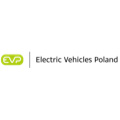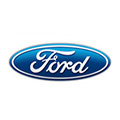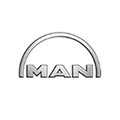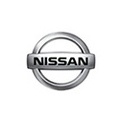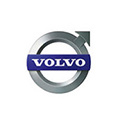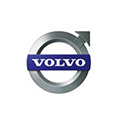01_2017 CES 2017: Chasing big wins, mobility players converge on Las Vegas
They say that what happens in Vegas, stays in Vegas. Having just attended CES 2017 I hope that isn’t true. By the time it finished consensus judged it the most significant yet for the automotive industry. There were over 500 auto-related exhibitors, including almost all major manufacturers - an incredible number even for a show the size of CES. And although the OEMs, suppliers, tech innovators and strategic partnerships on show represented a diverse cross section of the industry, several themes dominated their sales pitches and future focused discussions.
It only works if it all works
Mobility has been on our agenda for several years, but what struck me at CES 2017 weren’t specific innovations, however impressive. What I sensed is a growing realisation that genuine mobility is only achievable in an ecosystem where key elements work seamlessly together. Development of the autonomous car was naturally a big talking point, but as many observed, the need to continually transmit and receive a huge amount of information requires more energy than a combustion engine can generate. The heavy demand from the on-board electronics only works optimally if the car is electrically powered.
And these vehicles will only be successful if they can integrate safely into real world traffic and add value by cutting journey times. Busy downtown streets are a far cry from the safety and space of private test tracks. But it’s a challenge that can be overcome with the implementation of mobility enhanced environments like those currently being tested in the US. Urban area networks, powered by robust wireless signalling and new-wave 5G mobile phone networks will enable vehicles to anticipate delays, avoid danger and improve efficiency.
The main buzz at CES 2017 was about this mobility ecosystem, the need for integration and partnership opportunities it opens. It also sparked related issues, all of which are far from being resolved.
Can design and build keep up with innovation?
Auto manufacturers are notoriously long-term in their model strategies. Research, development, production line tooling and marketing are heavyweight expenses that demand a lengthy payback period. The speed of software development is an alien concept to manufacturers, yet a necessary new lifeblood. How can the OEMs, whose traditional sales lifecycle for successful models is around 11 years, adopt a more agile business approach that ensures the car’s design language keeps pace with the speed of software innovation? Imagine a world where changing your car for the latest model becomes as frequent and ‘normal’ as the way we change our smartphones.
Will Millennials drive change by hardly driving at all?
Millennials are a demographic that could influence this revolution. We know they are largely indifferent to the status associated with traditional car ownership, but we also know how deep their relationship with tech providers runs. Given that connected automated vehicles (CAVs) will be reliant on data carried by telecommunications providers’ 5G network spectrum, approaching Millennials from a tech capability and in-car app functionality could be a smart play. It might be especially powerful if harnessed to an in-the-moment approach to car need and usage. The thinking at CES 2017 is that savvy urban dwellers are likely to need a car only for a short-term specific use - hiring from a corporate or sharing within a peer group. So instead of seeing a car as a three or four-year financial commitment and having to consider every possible use scenario over the entire ownership period before choosing a model, you’ll be able to hire the most appropriate vehicle by the hour or day. Heading to the beach? Jump in a soft-top. Lugging an antique wardrobe home from an auction? Get yourself a CAV estate for the afternoon.
Are you the future of mobility? Yes, you.
This movement towards a more personalised relationship with cars came up time and again at CES 2017. Cars that ‘learn’ not just your specific driving and routing habits, but your personal taste in music and beverages are a fascinating possibility. Getting to know your love of a good coffee, the car would become your café concierge, suggesting local establishments in a strange town. These cars will study you in real time, faithfully documenting billions of data points and then translating them through Artificial Intelligence into recommendations and advice. They will know your weight, height and analyse microscopic perspiration to assess your health and wellbeing. And why leave it in the office car park all day while you work when it could be busy picking up groceries based on data downloaded from your intelligent home’s refrigerator?
‘Check’ or go ‘all in’?
As exciting and optimistic as the CAV chatter was at CES, there was also an undercurrent of trepidation. Development and implementation of the innovations necessary to realise the amazing possibilities will come at a hefty cost. And research suggests consumers are nervous about many of these plans – both the expense of electric vehicles and the perceived risk of driverless journeys. It’s a tipping point for the industry with no-one entirely sure what the future holds. It’s time to think about CAV potential with a wider vision - in terms of the ecosystem and how its success is conditional on inter-related elements. We need to put consumer behaviour into the mix too, because while they might not be driving the cars, people will influence how fast and how far the mobility ideas seen at CES will go, after leaving Las Vegas.
Author: Andy Turton is Head of Automotive, Americas at Kantar TNS. He is responsible for automotive business development and leads a number of global automotive initiatives.










